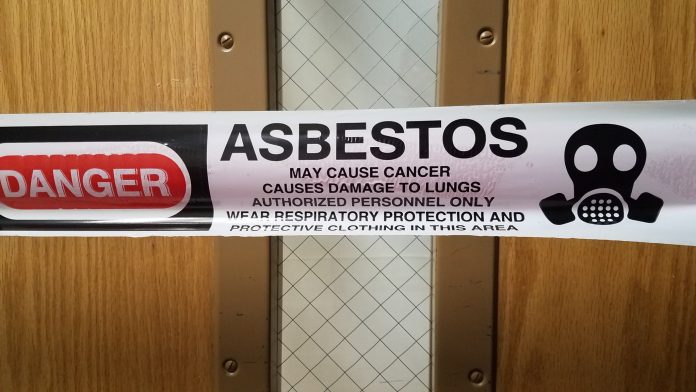Joseph Adams
Staff reporter
Asbestos briefly halted the ongoing library renovation projects.
The workers recognized potential contamination during a modification of the HVAC equipment on the third floor of the library, said Rex Hays, assistant vice president, Campus Services and Facilities Planning.
“Through experience we recognized that asbestos was present, so we had some testing done over some areas in the Library and there were traces of asbestos,” said Hays.
Older buildings on campus, like the library, often have asbestos. It was commonly used as a building material mainly for fireproofing and insulation, according to Hays.
In order to remove it, a specialized abatement, or removal team must come in and remove the material said Hays.
Under the Clean Air and Water Act and other Environmental Protection Agency Rules asbestos products were banned from construction projects due to the carcinogenic, or cancerous nature of the material.
Older building tiles and adhesive for duct work usually contains asbestos, a team was sent years ago to remove it and did not successfully remove it all.
“[The asbestos] had been removed before, part of the asbestos we found in the ceilings on the acoustical material was removed before, but whoever did it didn’t really do a good job, so there were traces of asbestos material still there,” said Hays.
There is not a large amount of asbestos in the library but there is enough that needs to be safely removed.
“The last conversation we had about the upper floors was opening the windows so that they will be able to move [the material] out through pipes directly into the remediation barrel, so no one has to be in contact and they won’t have to move anything through the buildings,” said Mickey McCloud, vice president and chief administrative officer, Academic Affairs.
It is only dangerous when it is disturbed and becomes airborne. That is the risk the asbestos poses for renovation projects according to Hays. It can cause multiple pulmonary diseases including, mesothelioma, Asbestosis and lung cancer, described Hays.
“Those black tops in the science labs have asbestos in them but there is no danger to them because they are not what is called friable, they are not in the air where you can breathe it,” said Hays.
McCloud and Hays both agreed that the removal is not going to cause major delays during the library renovation project.
“Because we had already staggered out the timeline a little bit, it shouldn’t impact our finish date,” said McCloud. “There will just be a little more activity on the front end instead of the back. We had already stretched it out in the hopes that what we planned was more than enough time, so we didn’t reach a state of panic at the end which often happens with building projects.”
The library renovations are expected to be done in the spring of 2020 and will look drastically different than it does now.
“We are supposed to be finished by the end of the year with the new piece opened next spring. So spring of 2020 we should be finished, and it should be fully functional,” said McCloud. “Inside will be substantially different, we will be creating zones on the first floor that will house all the learning resource centers. We will be moving away from some of the closed areas. The whole area will be open except for the television studio.”
The goal of the renovation is to merge the tutors, the learning resource centers and reference librarians all into one area so students have more streamlined and available resources.
“The hope is that we can connect students to all the tutoring services available as well as connect tutoring to actual library services, like the reference librarians,” said McCloud. “Whereas currently those things require migrating between buildings and bringing all those things back to finish a session.”
The renovations in the library will change how students learn at the college.
McCloud said, “We hope that is going to be a huge step forward for our campus and that the students can really get some good use out of it in a way that they haven’t been before. The hope is that we can really impact learning across all our departments by really centralizing the use of those resource centers and our tutors.”






















